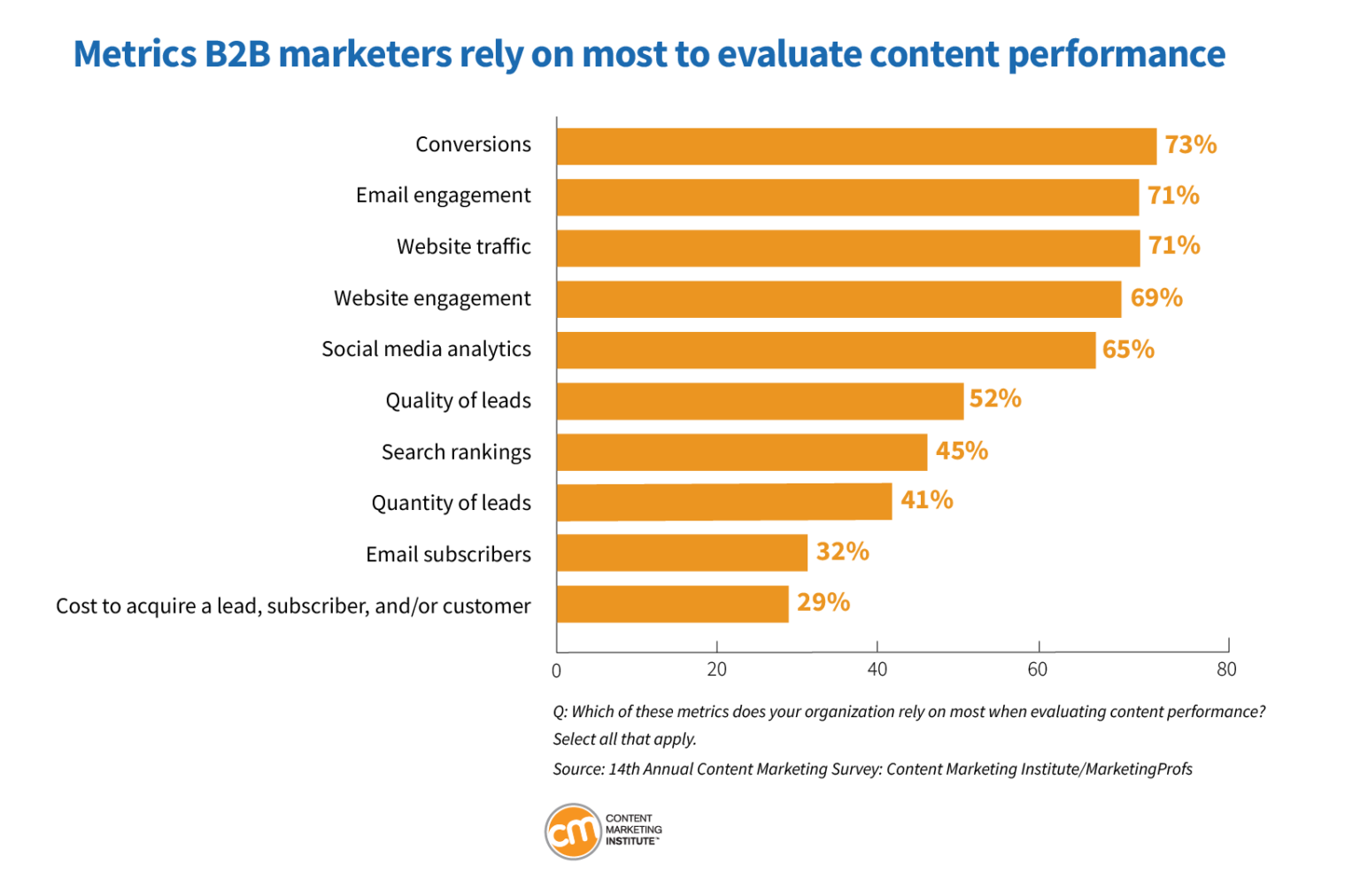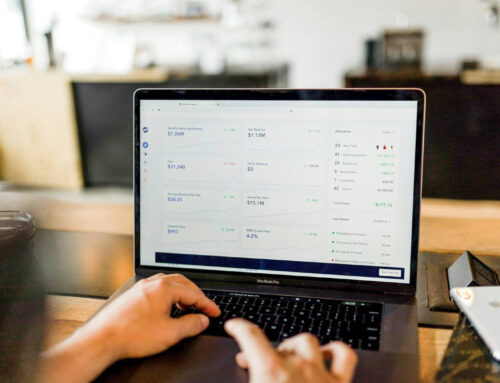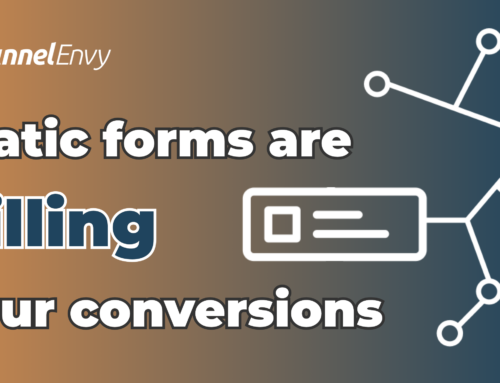Imagine this: Your content strategy is on point. You’ve meticulously crafted B2B marketing funnels, pouring effort into targeted campaigns, compelling content, demand generation, and strategic CTAs. Traffic flows steadily to your website, but converting leads needs to catch up.
You dive into your analytics dashboard, overwhelmed by a sea of marketing data points – website visits, bounce rates, and click-throughs. The list goes on. The challenge? You may be unsure how to get actionable insights from a B2B marketing funnel.
It’s not just about the data; it’s about transforming this data deluge into actionable information that illuminates what’s working (and what’s not) with your marketing efforts.
Here’s the good news: You’re not alone. Marketing automation and modern digital marketing tools generate a wealth of data, but extracting meaningful insights that translate to business growth can feel like searching for gold nuggets in a riverbed.
The key? Marketing teams should have a strategic selection process, allowing them to identify the data points that truly matter for optimizing the B2B marketing funnel and increasing that coveted conversion rate. Let’s look at how this works.
B2B Marketing Funnel Data Landscape
Your B2B marketing and sales funnel represents the customer journey, encompassing every touchpoint a potential lead has with your brand. Each stage in the marketing funnel strategy – Awareness, Consideration, and Decision – generates valuable data that sheds light on user behavior and engagement. Let’s look at the funnel stages and the key data points you can gather.
Awareness Stage
This stage is powered by content marketing strategies for creating awareness and is all about attracting potential customers. Search engine optimization can help get your brand and site noticed. Funnel metrics to track include website traffic sources (organic search, social media, referrals), customer data demographics (industry, company size), and content engagement metrics (time spent on the website, blog post views, video play rates).
Consideration Stage
As the action stage of the customer journey, visitors in this stage are actively researching solutions to their challenges.
Key data points to monitor include:
- Landing page conversions (e.g., comprehensive guides and ebook downloads, webinar registrations),
- Time spent on key content (product pages, case studies, frequently asked questions),
- CTAs clicked (demo requests, free trial signups).
Lead nurturing email marketing campaigns can help move customers to the next phase.
Decision Stage
This stage in the journey is when qualified leads move towards a purchase decision, an essential stage in the sales process. Important data points include demo signups, free trial activations, and quote requests to gauge interest and sales readiness.
Sales teams should remember that customer retention should be considered part of the sales cycle to capitalize on all the work done during customer acquisition. Be sure the customer service options are on point. Set up a system to review and analyze customer feedback regularly.
Remember: Data quality is paramount. Inaccurate data leads to faulty insights. As a B2B marketer, it’s your job to ensure that your analytics tools are properly configured and integrated to collect clean, reliable data. This data is the foundation for trustworthy analysis and the key to your success.
Goal-Driven Data Selection
Data is powerful, but without a clear direction, it can become overwhelming. Here’s where the magic happens – aligning your data selection with your specific marketing funnel goals.
Setting SMART Goals
The foundation of practical data analysis is establishing clear, actionable SMART goals.
Most of us are familiar with the SMART goals framework. Here’s a breakdown:
Specific: Define your goals precisely. Don’t settle for “increase website traffic.” Instead, aim to “increase qualified leads generated from organic search by 20% within Q3.”
Measurable: Ensure you can quantify your goals with relevant metrics.
Attainable: Set ambitious yet achievable goals within your resources and timeline.
Relevant: Align your goals with your overall marketing strategy and business objectives.
Time-bound: Establish a clear timeframe for achieving your goals.
Aligning Data with Goals
Choosing the right data points becomes straightforward once you have defined your SMART goals. The fundamental principle is to select metrics directly related to your funnel goals.
For example, if the goal is to increase brand awareness among decision-makers in the healthcare industry, the data point would be organic traffic from healthcare industry publications.
In another example, the chart below gives a broad overview of the metrics B2B marketers should track in 2024 to evaluate content performance.

Source: Content Marketing Institute
Prioritize Ruthlessly
It’s tempting to track every possible data point. However, information overload can lead to analysis paralysis. Prioritize a limited set of high-impact metrics that provide the most valuable insights for achieving your goals. Focus on metrics directly influencing conversions and answer specific questions about your funnel’s effectiveness.
How to Get Actionable Insights From a B2B Marketing Funnel
Data without interpretation is like a treasure chest without a key. Here’s a step-by-step process to unlock valuable insights from your B2B marketing funnel data:
Step 1: Data Visualization
The human brain thrives on visuals. Charts, graphs, and other data visualizations make complex information digestible, revealing trends and patterns that might otherwise go unnoticed. Leverage tools within your analytics platform or consider data visualization software to create clear and compelling representations of your chosen data points.
Step 2: Identify Trends and Patterns
With your data visualizations, it’s time to delve deeper into analyzing trends and patterns within the data sets. Ask yourself:
- Are there significant drops in traffic at specific points in the funnel?
- Which content pieces generate the most qualified leads?
- Are there particular CTAs underperforming?
Identifying these patterns will highlight areas for improvement within your funnel.
Step 3: Ask the Right Questions
Data analysis is all about asking the right questions. Here are some prompts to get you started:
- Why are visitors dropping off after a specific page?
- What content resonates most with qualified Consideration leads?
- Are there any technical issues hindering conversions on landing pages?
- How can we improve the user experience at different stages of the funnel?
- For account-based marketing, consider including the following: How well does our current funnel content resonate with our ideal customer profile (ICP)?
By asking insightful questions, you unlock the true potential of your data, uncovering insights to optimize your B2B marketing funnel, such as identifying high-value leads for nurturing through lead scoring programs.
Step 4: Hypothesis and Testing
Data-driven insights are powerful, but they’re not crystal balls. Based on your findings, the next step is formulating hypotheses about funnel improvements. Teams should test these hypotheses to validate their impact.
Here’s an example:
Hypothesis: Upgrading the design and CTAs on our product page will lead to a 15% increase in free trial signups, moving more leads into our sales funnel.
Use A/B testing or other methodologies to test your hypotheses and measure the results. This data-driven approach allows you to continuously refine your funnel for optimal conversions.
B2B Funnel Optimization – From Insights to Action
You can transform your B2B marketing funnel from a data swamp into a goldmine of valuable information by implementing a strategic data selection process and following the outlined steps for generating insights. Remember, data is only as powerful as your ability to utilize it effectively.
Dominate Data Overload and Start Seeing Results
As you’ve seen, data wrangling can be complex and time-consuming. At Funnel Envy, we believe in focusing your marketing efforts with laser precision. Our Full Funnel Conversion Audit is the perfect starting point, providing an efficient way to identify areas for improvement and maximize your return on investment.
Here’s what you’ll gain from our Full Funnel Conversion Audit:
- Holistic Optimization. Discover how to break down silos and optimize every stage of your funnel for peak performance.
- Lead Generation Mastery. Learn how to convert more top-of-funnel prospects into qualified leads ready to close.
- Marketing & Sales Alignment. Develop a shared understanding of lead qualification criteria to ensure seamless team handoff.
- Actionable Roadmap. Get a 21-day plan tailored to your specific needs for optimizing your entire funnel.
Ready to stop data overload and start seeing real improvements in your conversion rates?Click here to learn more about our Full Funnel Conversion Audit and unlock the full potential of your B2B marketing efforts!





